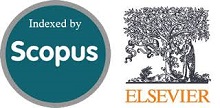The ITB Unit Hydrograph Method: A Novel Approach to User-Defined Unit Hydrograph Development (Part II)
Abstract
Â
Doi: 10.28991/CEJ-2025-011-05-015
Full Text: PDF
Keywords
References
Natakusumah, D. K. (2009). General Procedure for Determining Synthetic Unit Hydrograph for Calculating Design Flood Hydrograph. National Seminar on Water Resources Engineering, The Role of Community, Government and Private Sector as Networks, in Flood Hazard Mitigation,11 August, 2009, Bandung, Indonesia. (In Indonesian).
Natakusumah, D. K., Hatmoko, W., & Harlan, D. (2011). General Procedure for Calculating Synthetic Unit Hydrographs Using the ITB Method and Several Examples of Its Application. Jurnal Teknik Sipil, 18(3), 251. doi:10.5614/jts.2011.18.3.6. (In Indonesian).
Natakusumah, D. K., Harlan, D., & Hatmoko, W. (2013). A new synthetic unit hydrograph computation method based on the mass conservation principle. WIT Transactions on Ecology and the Environment, 172, 27–38. doi:10.2495/RBM130031.
Natakusumah, D. K. (2016). Use of ITB 1 and ITB-2 Synthetic Unit Hydrographs with Peak Discharge Factor (Kp) Calculated Exactly. Potensi: Jurnal Sipil Politeknik, 18(1), 35.
Natakusumah, D. K., Wicaksana, G. A., & Nathaniel, B. (2021). Towards standardization of design flood calculation using Synthetic Unit Hydrograph methods. 7th International Seminar of HATHI, 30 October, Surabaya, Indonesia. (In Indonesian).
Natakusumah, D. K., Hatmoko, W., Harlan, D., Nugroho, E. O., Kuntoro, A. A., Farid, M., Adinata, F., & Javas, J. (2025). The ITB Unit Hydrograph Method: A Novel Approach to User-Defined Unit Hydrograph Development (Part I). Civil Engineering Journal, 11(4), 1624–1651. doi:10.28991/cej-2025-011-04-021.
Nash, J. E. (1957). The form of the instantaneous unit hydrograph. Comptes Rendus et Rapports Assemblee Generale de Toronto, 3, 114-121.
Ritter, A., & Muñoz-Carpena, R. (2013). Performance evaluation of hydrological models: Statistical significance for reducing subjectivity in goodness-of-fit assessments. Journal of Hydrology, 480, 33-45. doi:10.1016/j.jhydrol.2012.12.004.
Duc, L., & Sawada, Y. (2023). A signal-processing-based interpretation of the Nash–Sutcliffe efficiency. Hydrology and Earth System Sciences, 27(9), 1827-1839. doi:10.5194/hess-27-1827-2023, 2023.
Teegavarapu, R. S., Sharma, P. J., & Patel, P. L. (2022). Frequency-based performance measure for hydrologic model evaluation. Journal of Hydrology, 608, 127583. doi:10.1016/j.jhydrol.2022.127583.
Zhang, Y., Vaze, J., Chiew, F. H., Teng, J., & Li, M. (2014). Predicting hydrological signatures in ungauged catchments using spatial interpolation, index model, and rainfall–runoff modelling. Journal of Hydrology, 517, 936-948. doi:10.1016/j.jhydrol.2014.06.032.
Tunas, I. G. (2017). Development of Synthetic Unit Hydrograph Model Based on Fractal Characteristics of River Basin Areas. Ph.D. Thesis, Institut Teknologi Sepuluh Nopember, Surabaya, Indonesia. (In Indonesian).
Tunas, I. G., & Lesmana, S. B. (2011). Deviation Analysis of Discharge Prediction Using Mock and NRECA Models. Infrastruktur, 1(1), 55-62.
DOI: 10.28991/CEJ-2025-011-05-015
Refbacks
- There are currently no refbacks.
Copyright (c) 2025 Dantje K. Natakusumah, Waluyo Hatmoko, Dhemi Harlan, Eka O. Nugroho, Arno A. Kuntoro, Mohammad Farid, Fitra Adinata, Jovian Javas

This work is licensed under a Creative Commons Attribution 4.0 International License.







